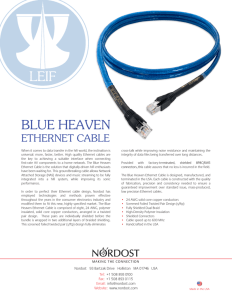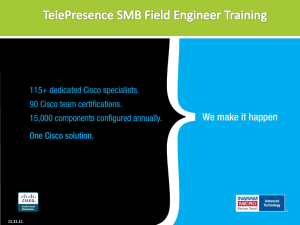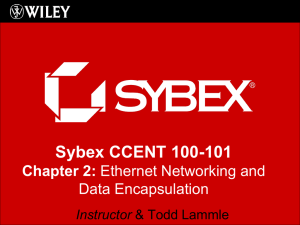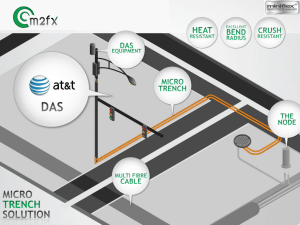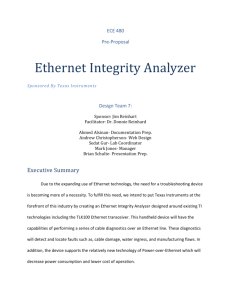Technical Presentati..
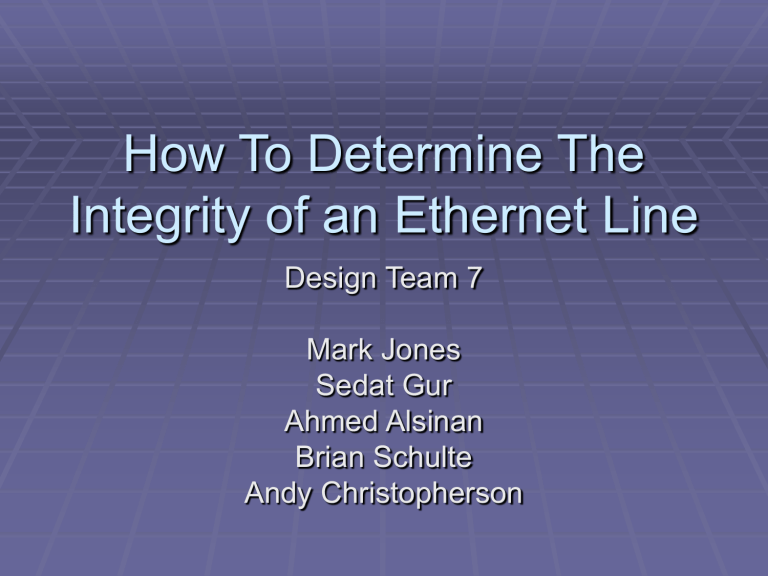
How To Determine The
Integrity of an Ethernet Line
Design Team 7
Mark Jones
Sedat Gur
Ahmed Alsinan
Brian Schulte
Andy Christopherson
Introduction
Ethernet History and Structure
Time Domain Reflectometry
Active Link Cable Diagnostics
Digital Spectrum Analysis
Power-over-Ethernet Detect
Output Data
History of Ethernet
Computer based networking technology for Local Area Networks (LANs)
Developed by Xerox in Early 70’s
Used for approximately 85% of world’s
LAN-connected PCs and workstations
Implemented with multiple types of cable
Coaxial
Twisted Pair
Fiber Optic
Twisted Pair Wires
Used in many Ethernet and telephone systems
Receiver takes the difference between the wire pair
Any interference in signal will be canceled out
Advantages
Cables are thin, easy to run throughout building
Flexible
Cheap to manufacture
Disadvantages
Resistance to electromagnetic interference depends on pair twisting scheme used
Twisted Pair Standards
Category 3
Up to 10 Mbps
Bandwidth up to 16 MHz
Popular in early 90’s
Category 5
Used for mainly 100Mbps networks
Bandwidth up to 100Mhz
Category 5e
Enhanced version of Category 5
More rigorous standards
Recommended for most networks
Category 6
Bandwidth up to 250MHz
Recommended for gigabit speeds
So what kind of errors are we looking for?
Opens and Shorts
Cable impedance mismatch
Bad connectors
Terminations mismatches
Water damage
Any other discontinuities
Also can find cable length
Time Domain Reflectometry
Will diagnose opens, shorts, cable impedance mismatch, bad connectors, termination mismatches, etc.
Uses reflections to find these errors and their locations
Time Domain Reflectometry
Pulse is transmitted of known amplitude down twisted pairs
Reflects off imperfections and faults
Measure return time and amplitude of reflections
Time Domain Reflectometry
With the gathered data we can find
Distance and Magnitude (Impedance)
Non-terminated Cables (Opens and Shorts)
Discontinuities (Bad Connectors)
Improperly Terminated Cables
Time Domain Reflectometry
Active Link Cable Diagnostics
Use of passive digital signal processing
Will find cable length with active cable
Uses predefined parameters based on the cable properties
High accuracy cable length
Spectrum Analysis
Analog Spectrum Analysis
Uses a variable band-pass filter
Digital Spectrum Analysis
Uses Discrete Fourier Transform
Results in frequency spectrum of our signal
Digital Spectrum Analysis
Gives magnitude of the frequency response
This will show us how the signal is spread out along the frequency spectrum
Allow us to see noise along the line
Especially how it relates to the length of the cable
Power-over-Ethernet Detect
Power can run over 2 pairs of wires while data is on the remaining 2 pairs
Power is supplied by a PSE and received by the
PD.
42~57 Volts
Power-over-Ethernet Detect
Detection Level can be varied as well as
Turn-on and Turn-off voltages
PHY to MAC Communication
PHY Layer
Transmission of raw bits, not logical data
MAC Layer
Logical communication
PHY to MAC Communication
Microcontroller (MCU)
Able to communicate with PHY layer
Uses Media Independent Interface (MII)
Readable Interface
Microcontroller can be programmed to send data to
LCD Display
Computer
LEDs
PHY to YOU
Conclusion
Ethernet History and Structure
Time Domain Reflectometry
Active Link Cable Diagnostics
Digital Spectrum Analysis
Power-over-Ethernet Detect
Output Data
QUESTIONS?

